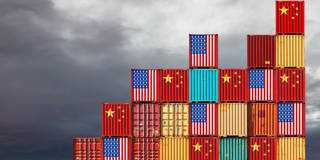The unfolding Sino-American conflict is far less cut and dried than the Cold War was. Minimizing the fallout will require both sides to recognize that, in an interconnected world, efforts to strengthen their own position become self-defeating when they undermine global stability and dynamism.
HONG KONG – In recent years, fears of a new cold war between the United States and China have been proliferating. But the tensions between the two powers would be better described as a “cool war,” characterized not by old-fashioned spheres of interest, proxy wars, and the threat of “mutually assured destruction,” but by an unprecedented combination of wide-ranging competition and deep interconnection.

HONG KONG – In recent years, fears of a new cold war between the United States and China have been proliferating. But the tensions between the two powers would be better described as a “cool war,” characterized not by old-fashioned spheres of interest, proxy wars, and the threat of “mutually assured destruction,” but by an unprecedented combination of wide-ranging competition and deep interconnection.